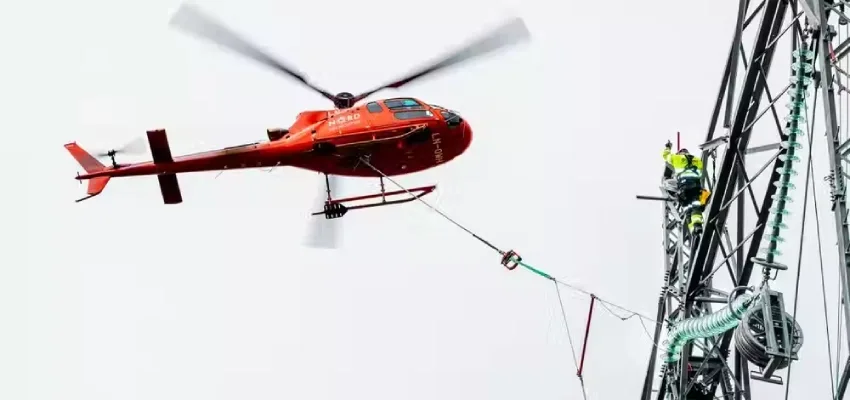Norway’s Statnett designs sustainable composite tower for 420-kV line
Norway: Statnett SF, DNV and Engelbrecht Consulting BV are investigating the use of transmission line towers made of composite materials, namely fiberglass.

Image source: T&D World
Norway: Statnett SF, DNV and Engelbrecht Consulting BV are investigating the use of transmission line towers made of composite materials, namely fiberglass.
The collaborative research program is focused on a conceptual tower design that uses fiber-reinforced polymers (FRP) to support conductors on a 420 kV transmission system.
Since the transmission system in Norway often crosses difficult terrain, such as mountainous regions without access roads, this prompts extensive use of helicopters to transport materials and in the erection of supporting towers during line construction. The idea is to design a new tower type that offers the same service life and system reliability of today’s towers as well as be aesthetically acceptable.
Therefore, the companies are working on a research program focused on a conceptual tower design that uses fibre-reinforced polymers (FRP) to support conductors on a 420-kV system.
Composite materials have been used in transmission lines before, in both towers at 132 kV and insulators at 420 kV. However, using FRP on a complete tower for a 420-kV transmission line is completely different. While dry composite materials have an electrically insulating surface, it becomes partly conductive when wet. In effect, FRP towers are essentially nonconductive but they become (semi) conductive when wet, presenting challenges in terms of the electrical design.
This characteristic means the separation distances on the tower must be taken into consideration. The specified air gaps need to ensure all flashovers go over the insulator string or to designated points on the tower. Tower sections where field concentrations occur that potentially accelerate material degradation also must be avoided.
Despite these challenges, the use of composite towers exhibits great promise, as larger sections can be flown to a site and built by a ground-based workforce more quickly than constructing a sectional tower above ground level. This also means the use of a helicopter can be greatly reduced, increasing worker safety and lowering installation costs.
Several prototypes have already been made within the extensive testing program, which required to qualify and disqualify composite material samples exposed large differences in seemingly identical products. Nevertheless, the testing methodology was able to identify valid composite materials for use on all voltage levels.
One of the key aspects of this project was the ability to use existing theoretical knowledge to design a tower using composite materials that would satisfy Statnett’s future policy, with respect to 420-kV overhead transmission system lines:
- Refining existing methods employed to install structures supporting the conductors on the overhead transmission system.
- Using lightweight transmission line towers comprising composite materials that are aesthetically and environmentally acceptable with a minimal low carbon footprint.
- Economically maintaining system reliability and customer service.
Source: T&D World
#composite transmission line towers#DNV#Engelbrecht Consulting BV#fibre-reinforced polymers#Norway#Statnett SF




